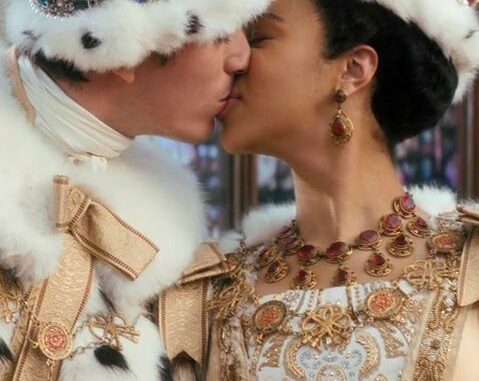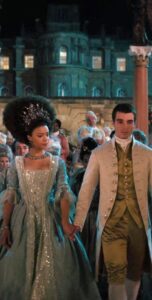
Reynolds and Brimsley may not have been a public relationship, but the series didn’t take the easy way out of having them fight prejudices and hate. Instead, they had a completely normal, if secretive, romantic, allowing them to imagine a hopeful future where they spend their lives together. Brimsley and Reynolds’ positions make it easy to spend time together, and reasonable for them to never marry, meaning they needn’t be separated by arranged marriages. While it would be realistic for a gay couple in this timeframe to be doomed based on societal pressure, Queen Charlotte takes a unique approach, giving them a mostly happy story. The final episode shows the older Brimsley dancing alone, mirroring their dance together. This suggests that Reynolds is no longer in his life, yet he seems to look upon the memories fondly. So perhaps it’s not an entirely happy ending, yet many of the older romances are not. Look at Charlotte and George or Violet mourning her husband. Like Brimsley and Reynolds, these couples were happy for a time, but love isn’t without its challenges. Brimsley and Reynolds may not have a leading romance, nor do they get a happy ending after the time jumps, but they are a well-rounded and positive depiction of a gay romance in the world of Bridgerton.

The inclusion of a queer relationship is a big step for the franchise. Bridgerton introduces Henry Granville (Julian Ovendon), an artistic friend of Benedict’s who is gay. Benedict’s attendance at Henry’s party and the chemistry the two men shared led to speculation of Benedict being gay. But as he has struck up a relationship with Madame Delacroix (Kathryn Drysdale), that seems less likely. Fans have theorized that the independent-minded Eloise Bridgerton (Claudia Jessie) may explore other sexualities due to her total rejection of societal expectations. Yet this has little more hope to back it up. With the eight Bridgerton siblings each taking a turn as the lead for a season, it’s always possible that one or two may provide a leading queer relationship, but this would be a departure from Julia Quinn’s novels on which the show is based. Unless, and until, this happens, fans will have to be satisfied with secondary characters, such as Brimsley and Reynolds, being the LGBTQ+ representation in this universe. Yet their trailblazing relationship proves that there is room in the world of Bridgerton for happy couples of different sexual orientations.
